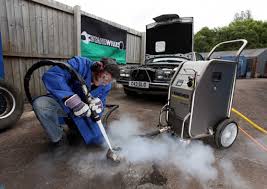Introduction
RAID systems are popular in both commercial and residential setups in Brisbane for their performance and fault tolerance. However, RAID isn’t immune to data loss. Factors like hardware failure, power surges, firmware issues, or human error can cause RAID arrays to fail, making data inaccessible. When this happens, it’s vital to follow a structured recovery process to avoid permanent loss. Whether you’re a tech-savvy user or someone facing this issue for the first time, this step-by-step guide will help you navigate RAID recovery confidently.
Assess the Situation
The first step is to diagnose the cause of failure. RAID systems can fail due to a variety of reasons—disk failure, corrupted configurations, power issues, or accidental deletion. Take note of any error messages from your RAID controller and inspect the system for unusual activity. Avoid rebooting the system repeatedly, as this can further damage the array. For users in Brisbane, it’s a good idea to reach out to a professional RAID recovery service to conduct an in-depth assessment and prevent irreversible damage.
Identify the RAID Level and Configuration
Understanding your RAID level is crucial because recovery strategies vary between levels. RAID 0, 1, 5, 6, and 10 all differ in terms of data distribution, parity, and redundancy. If you’re unsure about your RAID configuration, check your system documentation or contact a recovery expert. Knowing your RAID setup will help in selecting the correct tools or services required for recovery.
Secure the Failed Drives
Before any recovery attempts, secure the affected drives. Power off the RAID system immediately to prevent further data degradation. Label each drive based on its position in the array, and store them safely. Avoid DIY repairs or rebuild attempts unless you’re fully confident—improper handling may worsen the situation. Brisbane users should consider consulting local data recovery professionals to avoid taking unnecessary risks.
Clone the Failed Drives
Before initiating any recovery attempt, create a sector-by-sector clone of each drive in the array. Cloning protects the original data by allowing you to work on copies, preserving the state of the original drives. Use specialized tools designed for data recovery to perform this task. Avoid writing any data to the original drives under any circumstances. Many experts offering RAID data recovery Brisbane services emphasize cloning as a crucial step to avoid irreversible data loss.
Reconstruct the RAID Array
With cloned drives ready, the next task is to reconstruct the RAID array. This step involves identifying how the data was originally striped or mirrored across the drives and reassembling it logically. Professional-grade RAID recovery software or expert services can automate this process, helping to rebuild the array and pinpoint data structures. If you’re dealing with a complex RAID configuration, professional intervention in Brisbane is strongly recommended.
Extract and Recover the Data
Once the RAID array is logically reconstructed, the data extraction process begins. Advanced RAID recovery tools can help retrieve files, folders, or even the entire array based on your needs. The process may be time-consuming, especially for large volumes of data. Patience is key, as rushing can compromise file integrity. Ensure that you’re recovering data to a separate, stable storage medium—not back onto the original array.
Verify the Recovered Data
Data recovery isn’t complete until you’ve verified the integrity of the retrieved files. Check for file corruption, missing elements, or inconsistencies. Many recovery tools offer built-in validation features to help ensure the recovered data is intact. Brisbane users handling sensitive or business-critical information should consider running checksum or hash comparisons for added accuracy.
Restore the Data
After verifying that the data is complete and intact, restore it to a secure environment. This could be a new RAID setup, cloud storage, or an external drive—depending on your needs. Be cautious during this stage to prevent accidental overwrites or corruption. Businesses should also review their backup policies and disaster recovery plans to ensure long-term data security.
Conclusion
RAID data loss is a serious concern for Brisbane users, but it doesn’t have to result in permanent damage. By understanding the RAID recovery process and acting methodically, you can significantly improve the chances of successful data retrieval. From the initial assessment to final restoration, each step plays a vital role. While some experienced users may attempt the process themselves, most are better served by enlisting the help of professional RAID data recovery specialists in Brisbane—especially when dealing with high-value or mission-critical data.
- RAID Data Recovery Brisbane | Step-by-Step Guide to Recover Lost Data
- Looking for RAID data recovery in Brisbane? Follow this expert step-by-step guide to securely recover data from failed RAID systems and prevent permanent data loss.
- RAID data recovery, RAID data loss, RAID data recovery Brisbane
Related posts:
 Why KBH Games Is Perfect for Family-Friendly Online Entertainment
Why KBH Games Is Perfect for Family-Friendly Online Entertainment
 Build a Seamless School Portal with These Powerful Templates
Build a Seamless School Portal with These Powerful Templates
 7 Ways Aerospace Companies Are Using Composites to Elevate Aerial Robotics
7 Ways Aerospace Companies Are Using Composites to Elevate Aerial Robotics
 Samsung Galaxy S24 Ultra Price in Pakistan: A Closer Look at the Mid-Range Marvel
Samsung Galaxy S24 Ultra Price in Pakistan: A Closer Look at the Mid-Range Marvel
 The Ultimate Web Development Checklist for Building High-Performance Digital Experiences
The Ultimate Web Development Checklist for Building High-Performance Digital Experiences
 10 Local SEO Tips to Boost Your Electronics Repair Shop Online
10 Local SEO Tips to Boost Your Electronics Repair Shop Online
 Optimizing Healthcare Operations in Qatar Through Dynamics 365 Finance and Operations
Optimizing Healthcare Operations in Qatar Through Dynamics 365 Finance and Operations
 How to Hire the Perfect Developer for Your Startup: A Step-by-Step Guide
How to Hire the Perfect Developer for Your Startup: A Step-by-Step Guide







